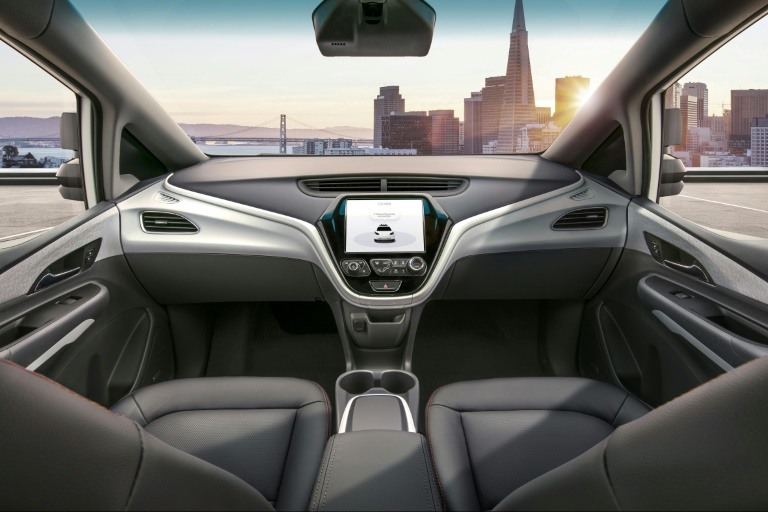GM will launch robocars without manual controls in 2019

The autonomous revolution is nearly upon us, and General Motors is entering the fray properly with this, the Cruise AV. The fruit of GM’s $1 billion acquisition of Cruise Automotive back in March of 2016, the Cruise AV is a properly driverless car. That is to say, it has no steering wheel, no pedals and no real driver controls at all — aside from a touchscreen — and GM says it’ll hit the road in 2019.
Intended just for a GM-operated ride-sharing service, users will summon a Cruise AV using an app, much like they would if using a service like Lyft — which GM also happens to own a fair bit of. Users can also input their destination through the app and the car will safely, silently usher them along.
But it goes beyond that. Users can also input things like preferred temperature and music, and the car will make sure it’s set to your preferences before showing up on the curb.
Once inside, passengers will receive constant updates on the car’s progress and status through a series of touchscreens: one in the dash up front and two more behind the headrests for passengers in the rear. It’s through these screens the car will give an idea of what it can “see” of the world around.
And how will it see? Through a complex and redundant series of optical, laser and radar scanners, including three separate radar systems. Should any one of the sensor systems fails, a backup system could cover. Likewise, the autonomous processing system is fully redundant, so that any failure there would simply result in switching from one to the other.
The Cruise AV has been tested extensively in San Francisco and presumably will launch there first in 2019, when they start hitting the roads. No word on when they might be available to other ride-sharing services or, indeed, whether you or I will ever be able to buy one, but GM says the Cruise AV is a big part of its plan for “a future with zero crashes, zero emissions and zero congestion.” That sounds like a pretty good place to us.
GM sees the announcement Friday as a significant step toward the widespread adoption of self-driving vehicle technology. But before it can use the new vehicles, GM will need special approval from the federal government.
The company has filed a petition with the National Highway Traffic Safety Administration, requesting exemptions from 16 safety standards. It says these aren’t relevant because the vehicle doesn’t have manual controls.
“When you don’t have a steering wheel, it makes no sense to talk about an airbag in a steering wheel,” Paul Hemmersbaugh, GM’s policy director for autonomous vehicles, told reporters. “So what we do instead is put in an airbag that mirrors the right front passenger side, and show it provides equivalent safety.”
Some of Cruise’s competitors, including Uber and Waymo, are also testing in Arizona. The Uber and Waymo test vehicles still have steering wheels and pedals. Waymo announced in November that it was removing test drivers from the front seat. It plans to launch a commercial service in the Phoenix area this year.

